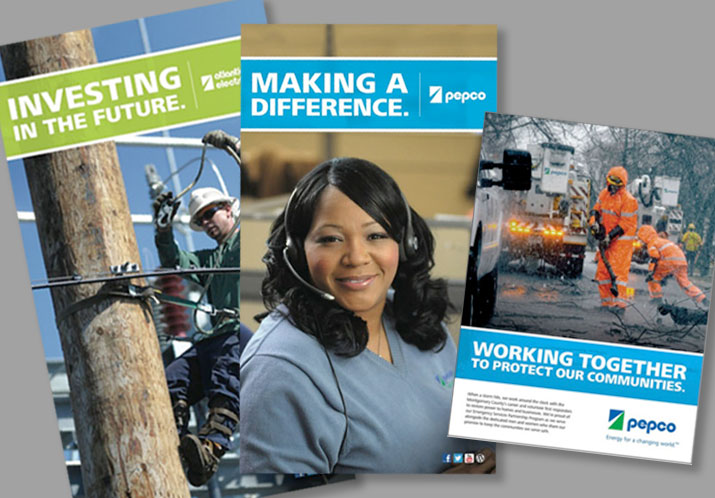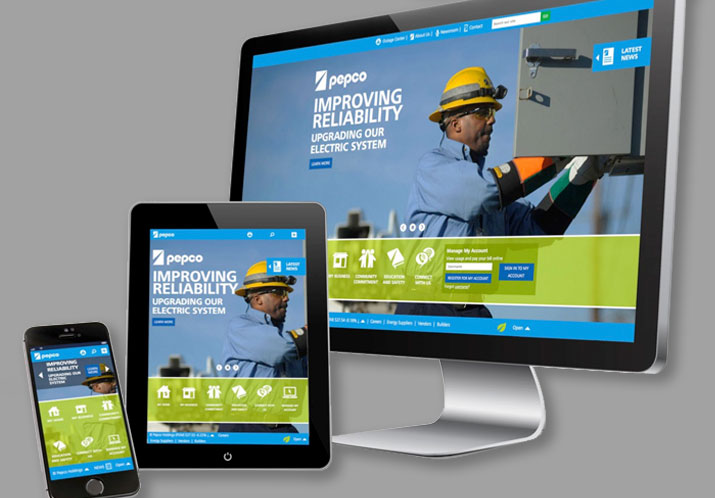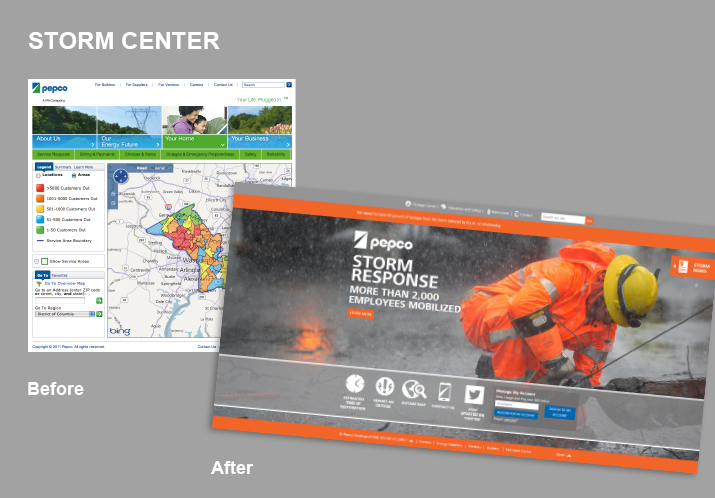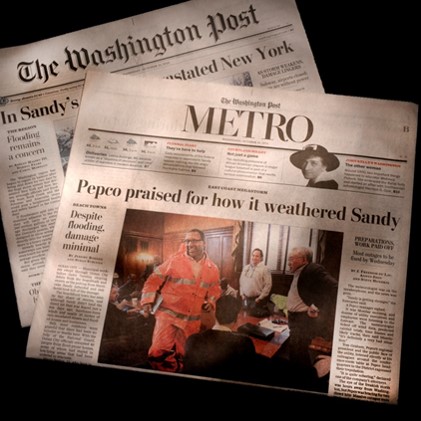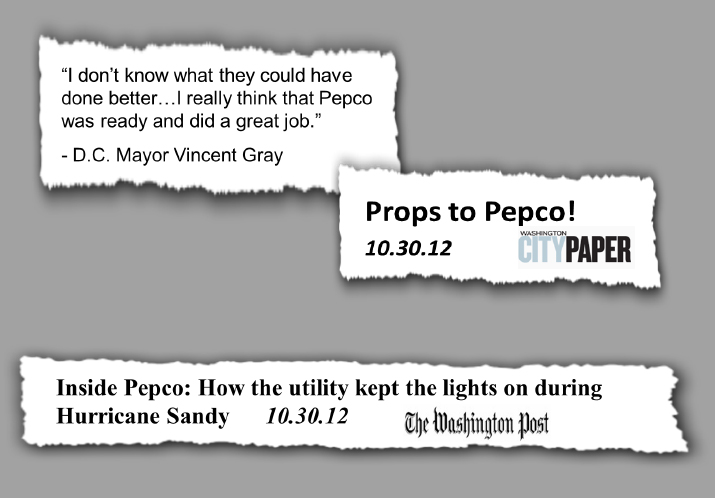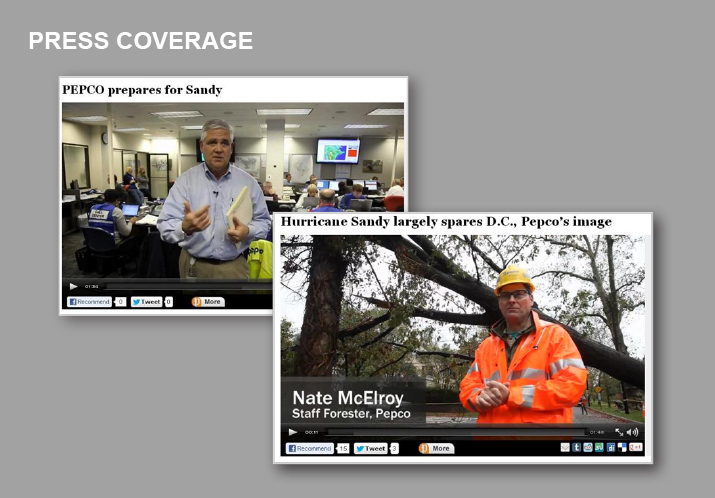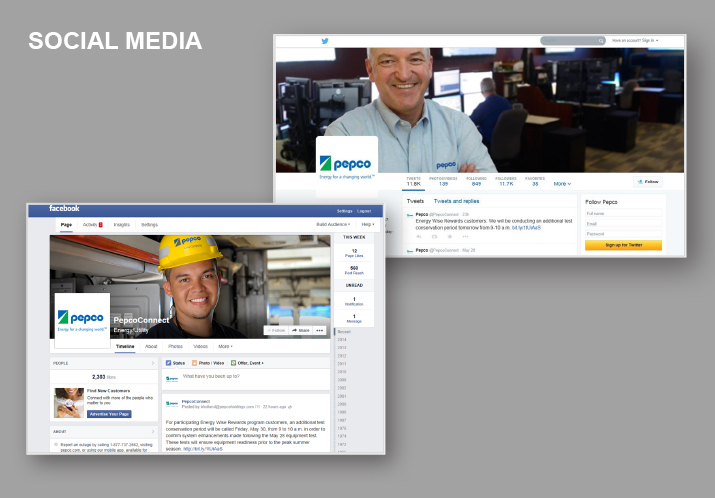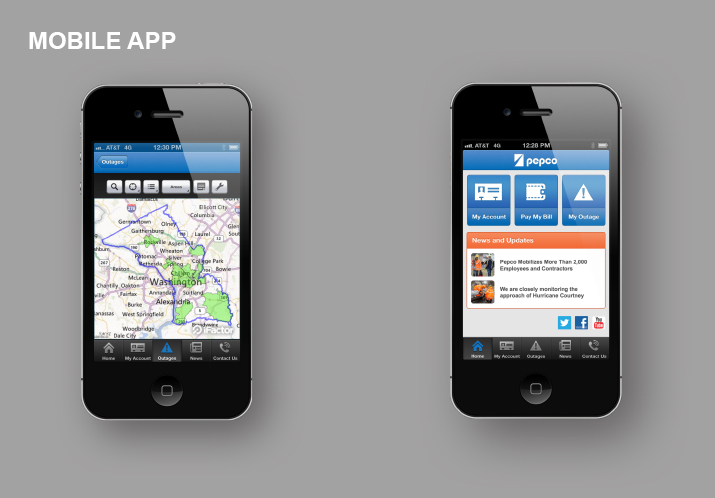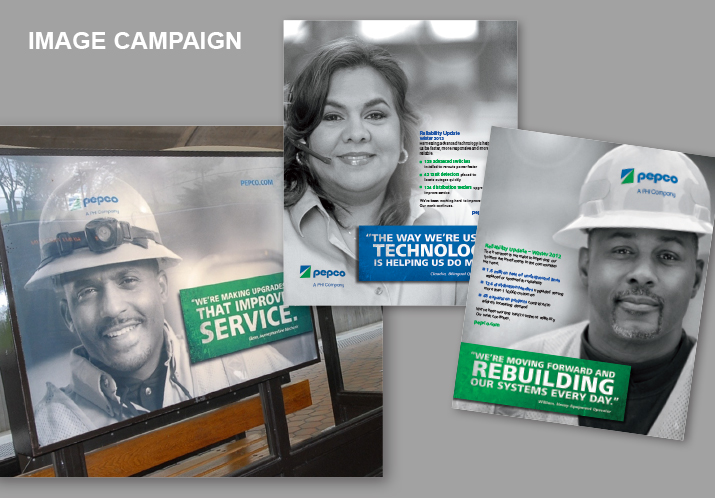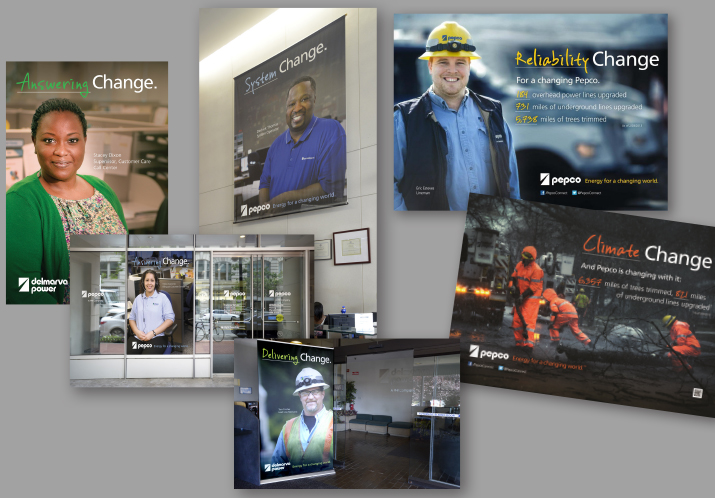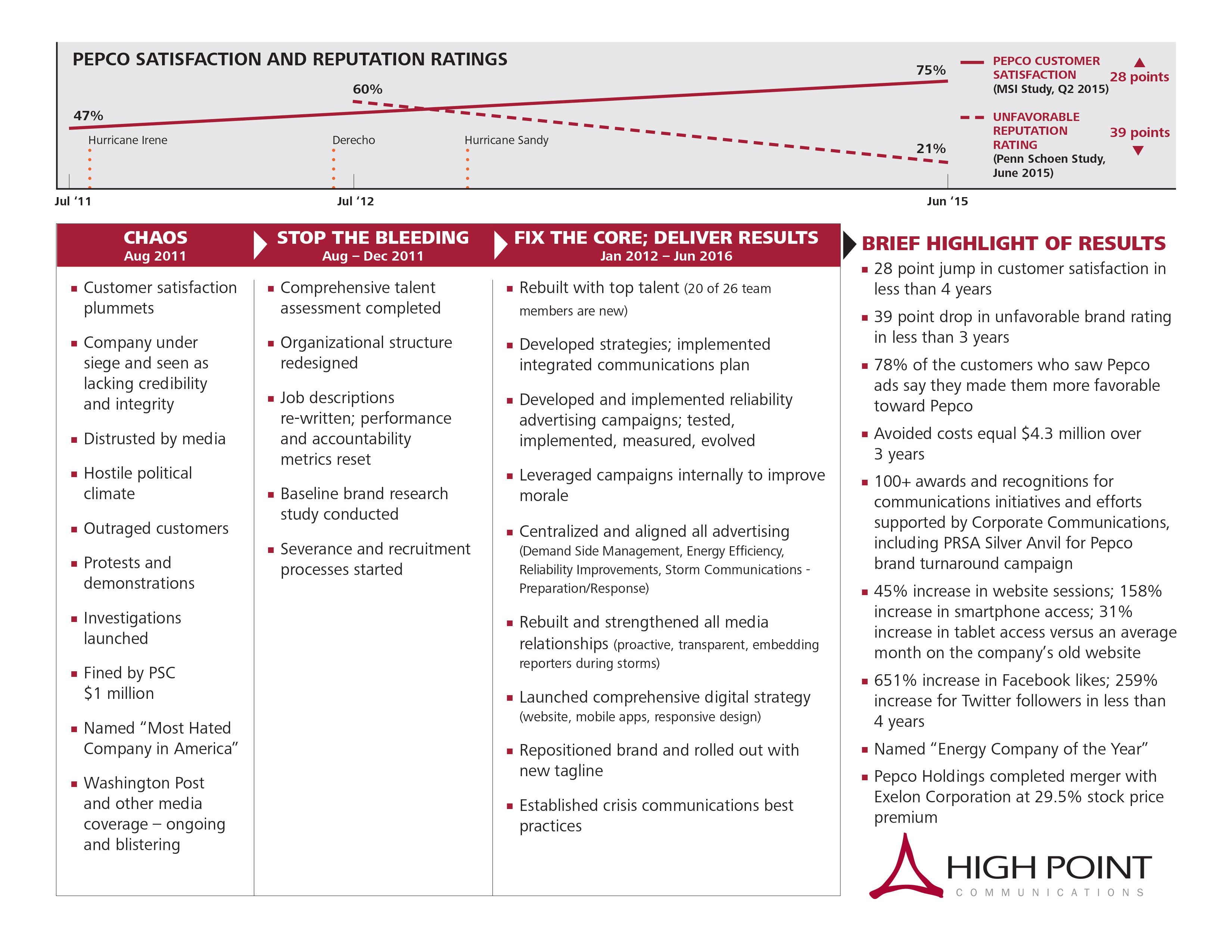Pepco Holdings, Inc.
Project Date: 2011 – 2016
Project Type: Corporate Reputation Repair
Situation
Scathing press, customer outrage and political backlash were everyday occurrences for Pepco, the electric utility that serves the District of Columbia. It boiled over in the summer of 2011, when it was named the “most hated company in America” by Business Insider, based on ratings published by the American Customer Satisfaction Index. Pepco and its parent company, Pepco Holdings, Inc. (PHI, NYSE: POM), which serves 2 million customers in Delaware, Maryland, New Jersey and D.C., were hit with protests, media ambushes, regulatory investigations, new legislation and a $1 million fine. The core issue was that the Pepco utility had struggled with service reliability and restoration issues that led to a nosedive in customer satisfaction.
PHI launched two initiatives in 2010: the company’s biggest reliability effort – a five-year, $5.9 billion investment in distribution and transmission systems and technology, and an overhaul in planning and processes for power restoration. But the company did not know how to tell its story so it suffered unrelenting criticism and the damage was deep. Just after Pepco earned its “most hated” moniker and customer satisfaction plummeted to an all-time low of 47%, we started working for PHI and laid out an aggressive vision to improve the company’s reputation. That meant strengthening the team, developing and implementing an integrated communications strategy, and taking strategic risks in 2012 to turn around embattled Pepco’s image while maintaining the solid reputations of its sister utilities, Atlantic City Electric and Delmarva Power.
Strategy
Re-engineering the 26-member communications team was critical to the turnaround effort so within months, we implemented a new structure, job descriptions, greater accountability, and internal and external high-performing talent who had strategic focus and depth of experience in branding, advertising, media relations, marketing, and digital communications.
As the team was being built, we developed over a dozen communications strategies to support operational objectives and completely reset the direction and purpose for all PHI communications – internal and external. The strategies were developed to work in an integrated fashion and were based upon comprehensive research that drove messaging approach, tactics and design. Every communications tactic had a purpose and an opportunity to influence customer satisfaction and reputation metrics. We launched a new and engaging brand that told the stories of the incredible investment in infrastructure and improvements to the power outage restoration process through research-driven key messages, photography of improvement and restoration work, and the faces and voices of the people on the front lines. We also established a strong, 160-member crisis communications structure and comprehensive communications materials for storms and other serious events that proactively kept all customers, media, elected officials, employees and other key stakeholders informed.
Because media outlets would not report any positive messaging when we first arrived, a major component of the turnaround strategy was a paid media strategy that would allow us to tell our story straight to customers and other stakeholders. While we worked on a proactive, responsive and transparent media relations strategy to build relationships with the media that would ultimately result in neutral and even positive coverage, we developed a multi-year, multi-million dollar television, radio, transit, online and print advertising strategy. That strategy highlighted data points on reliability and restoration process improvements and showed the “real people doing the real work,” that customers told us through research that they wanted to see. We also unveiled a new tagline: Energy for a Changing World. The tagline helped to tell a broader story of changing weather patterns that threaten overhead electric systems across the country.
The communications strategy included a focus on digital engagement that customers also clearly wanted. We were further able to tell the company’s story of reliability and restoration process improvement by building communities through Facebook, Twitter and YouTube, by reshaping and promoting the company’s mobile app, and by developing and launching a completely new website. The previous website and much of its content was nine years old so we started over, aligning the site with the new brand and implementing leading-edge responsive design, an icon-driven customer dashboard that was easy to navigate on mobile devices, and a full-screen rotating feature that helped tell the story through photography. We also developed a storm center that was aligned with the main website but featured the orange and gray palette of our emergency response communications, designed to alert our customers to a crisis.
We launched the web-based storm center during Hurricane Sandy in October 2012, and it was an immediate success. Also during that storm, we launched “real-time” television ads and a new media relations approach that included allowing more than a dozen reporters – including several from The Washington Post – to become embedded into storm operations and tell the story from the inside out. It was risky given the negative press we had received in the past but the idea paid off and we received a headline – “Inside Pepco: How the Utility Kept the Lights On During Hurricane Sandy,” The Washington Post, 2012 – that was a 180-degree change from the negative headlines of the past, like “Why Pepco Can’t Keep the Lights On,” The Washington Post, 2010.
Over the course of several years, we continued to apply lessons learned from storms and through our many research studies to evolve the communications strategy and tactics to improve customer satisfaction and strengthen brand reputation.
Results
The results of the extensive work done to improve the team, brand and communications strategy yielded a dramatic improvement in just three years. Specifically, and also in the form of a chart below, results include:
- Reputation improved 39 points and customer satisfaction climbed 28 points over three years
- Headlines changed from “Why Pepco Can’t Keep the Lights On” Washington Post 2010 to “Inside Pepco: How the Utility Kept the Lights On During Hurricane Sandy” Washington Post, 2012
- JD Power recognized Pepco as the most improved utility among large brands with a 47-point lift, 2014
- Digital engagement jumped between 2012 and 2016:
- Facebook likes increased by 1,342%
- Twitter followers increased by 360%
- Total website sessions increased by 45%, page views increased by 46% and mobile sessions increased by 158%
- Mobile app downloads totaled 323,764 between its launch in 2012 and mid-2016
- PHI was named Energy Company of the Year by EnergyBiz, 2014
- 29.5% stock price premium in the 2016 PHI-Exelon merger, after brand was restored
- Won Public Relations Society of America (PRSA) Silver Anvil Award for Turning Around the Most Hated Company in America, 2013
Click on the image below for a visual snapshot of the turnaround story:

